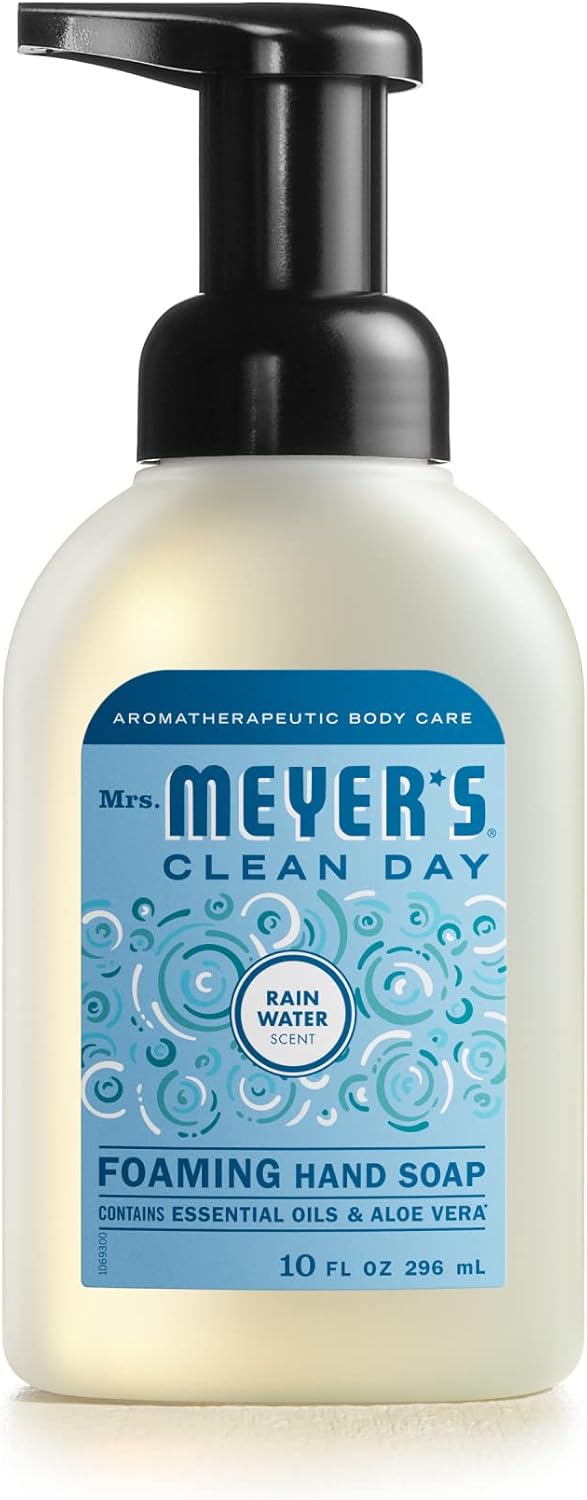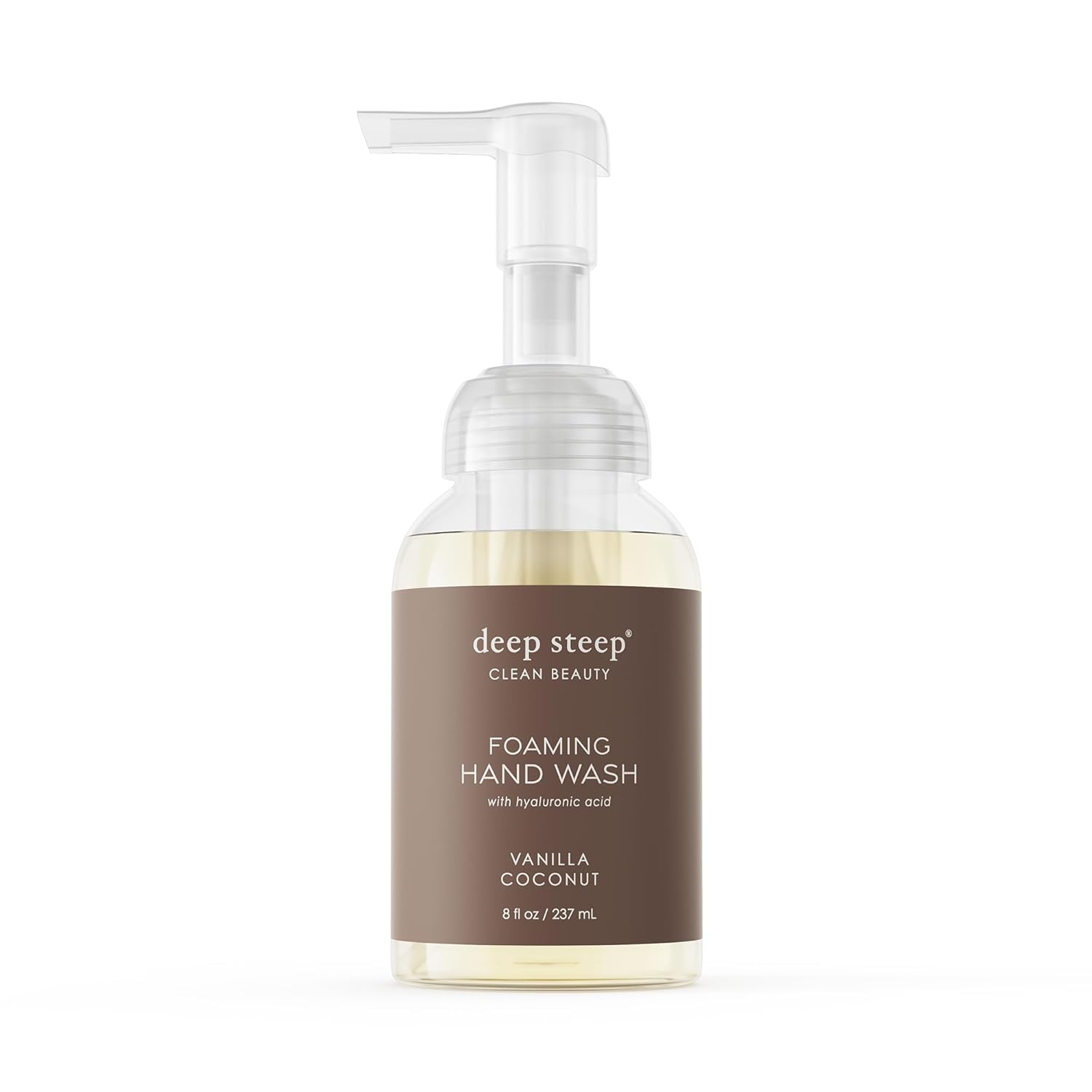Our Top Hand Hygiene Picks
Quality products to keep your hands clean and healthy

Method Foaming Hand Soap - Lemon Mint
This eco-friendly foaming soap combines powerful cleaning with a refreshing lemon mint scent that everyone in your office will love. Don't let your workplace run out - stock up now before the next flu season hits!
Shop Now
Mrs. Meyer's Foaming Hand Soap - Rainwater
Made with plant-derived ingredients and essential oils, this gentle Rainwater scent leaves hands clean without harsh chemicals. Grab yours today - it's flying off the shelves and your hands deserve the best care!
Shop Now
Deep Steep Foaming Hand Wash - Vanilla Coconut
Luxurious vanilla coconut scent with hyaluronic acid keeps hands moisturized while eliminating germs effectively. This clean beauty formula is selling out fast - order now before it's gone for good!
Shop NowSome links on our site are affiliate links, which means we may earn a small commission (at no extra cost to you) if you make a purchase. These little boosts help us keep Forgot Soap running and full of fresh ideas. Thanks for supporting us while keeping things clean!
Official Health Organization Resources
Authoritative information from the CDC and WHO on hand hygiene and disease prevention
When and How to Wash Your Hands
The CDC's comprehensive guide on proper handwashing technique, including when to wash your hands, how long to wash, and the most effective methods for removing germs.
Read CDC GuideWhy Handwashing Matters
Learn about the science behind handwashing and why it's one of the most effective ways to prevent the spread of infectious diseases in communities and workplaces.
Read CDC ArticleWorld Hand Hygiene Day
The World Health Organization's campaign promoting hand hygiene in healthcare and community settings, with global impact data and evidence-based recommendations.
Visit WHO CampaignShow Me the Science
Evidence-based research on the effectiveness of handwashing, including studies on how hand hygiene reduces illness transmission and improves public health outcomes.
View ResearchHand Hygiene in Healthcare
WHO's guidelines for hand hygiene in healthcare settings, including the "Five Moments for Hand Hygiene" and evidence-based protocols for infection prevention.
Read WHO GuidelinesHandwashing in Community Settings
Practical guidance for promoting handwashing in schools, workplaces, and public spaces, with tips for creating a culture of hand hygiene compliance.
Community GuideUnderstanding Hand Hygiene
Comprehensive guides on the importance of hand hygiene and best practices
The Complete Guide to Hand Hygiene in the Workplace
Hand hygiene is one of the most critical yet often overlooked aspects of workplace health and safety. Whether you work in an office, healthcare facility, food service establishment, or industrial setting, proper hand hygiene practices can dramatically reduce the spread of infectious diseases and improve overall workplace health.
Why Hand Hygiene Matters
Your hands are in constant contact with surfaces that may harbor harmful microorganisms. Throughout a typical workday, you touch doorknobs, keyboards, phones, shared equipment, and countless other surfaces. Each contact is an opportunity for germs to transfer from surfaces to your hands, and from your hands to your face, where they can enter your body through your eyes, nose, or mouth.
Research has consistently shown that proper hand hygiene can reduce respiratory infections by 16-21% and gastrointestinal illnesses by 23-40%. In workplace settings, this translates to fewer sick days, reduced healthcare costs, and improved productivity.
When to Wash Your Hands
Hand hygiene is essential at key moments throughout the day:
- Before eating or preparing food
- After using the restroom
- After blowing your nose, coughing, or sneezing
- After touching shared surfaces or equipment
- Before and after treating a wound
- After touching garbage or cleaning supplies
- After handling money
- When hands are visibly dirty
Proper Handwashing Technique
Effective handwashing requires more than a quick rinse. Follow these steps for optimal results:
- Wet your hands with clean, running water (warm or cold)
- Apply soap and lather well, covering all surfaces of your hands
- Scrub for at least 20 seconds - all surfaces including backs of hands, between fingers, and under nails
- Rinse thoroughly under clean, running water
- Dry with a clean towel or air dry
The 20-Second Rule
Twenty seconds might seem long, but it's the minimum time needed to effectively remove germs. Try humming the "Happy Birthday" song twice or counting slowly to 20 to ensure adequate washing time.
The Science of Handwashing: How Soap and Water Fight Germs
Understanding the science behind handwashing can help reinforce why this simple act is so effective at preventing disease transmission.
How Soap Works at the Molecular Level
Soap molecules have a unique structure that makes them highly effective at removing germs. Each soap molecule has two parts: a hydrophilic (water-loving) head and a hydrophobic (water-fearing) tail. When you wash your hands with soap, these molecules surround germs and oil particles on your skin.
The hydrophobic tails attach to the germs and oils, while the hydrophilic heads face outward toward the water. As you rinse, the soap molecules lift the germs and oils away from your skin and carry them down the drain. This physical removal is more effective than simply rinsing with water alone.
Why 20 Seconds Matters
The 20-second recommendation isn't arbitrary. Research shows that this duration allows enough time for:
- Soap to spread across all hand surfaces
- Mechanical action (scrubbing) to dislodge germs
- Soap molecules to fully surround and lift away contaminants
- Complete coverage of commonly missed areas
Studies comparing different washing durations found that 20 seconds significantly reduces bacterial counts compared to shorter washing times, with minimal additional benefit beyond 20 seconds for routine handwashing.
The Fingernail Challenge
The area under fingernails harbors the highest concentration of germs on the hands. Even after handwashing, this area often retains bacteria. Regular nail trimming and using a nail brush during handwashing can help address this problem area.